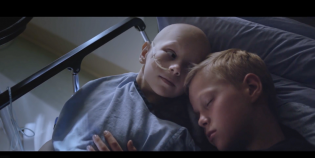How a new agency plans to avoid the pitfalls of today’s media game
Former OMD Canada managing director Sherry O’Neil likens the inner workings of a multinational media agency to a pyramid: a few experienced senior-level figureheads overseeing teams of junior buyers. While it’s a model that seemingly works, it can sometimes hobble a shop, with a lack of commitment, focus and attention from those senior execs.
This is one of the reasons O’Neil and David Cairns, the former director of communications planning at Dentsu Canada, have opened an independent media shop in Toronto called Cairns O’Neil Strategic Media Inc. that will serve small to mid-size clients. With a tighter roster of clients, Cairns and O’Neil believe they are in a good position to dedicate more time to each account, helping them solve business problems, which, says Cairns, is what advertising is all about.
Related
• Media Veterans Launch Independent Agency Cairns O’Neil
What are the benefits of being a small, independent media agency?
O’Neil It’s between David and I to pick and choose how we want to work and who we want to work with. Plus we don’t have the pressure of being part of a publicly traded company and trying to deliver revenue growth year over year. I think we have the opportunity to dig deeper into our clients’ businesses than an agency that has a few people at the top and a lot of junior people supporting the detail media function. We have the opportunity to become business partners with our clients as opposed to just a media supplier.
Cairns Having a smaller agency staffed by senior people gives a client the opportunity to tap into a lot of years of experience and the kind of passion for the business that may not exist as much in a larger operation that’s churning buys.
What is the one flaw in the big agency model that you will avoid?
Cairns At a lot of the larger operations, the senior people focus the majority of their time on new business acquisition. It doesn’t take a lot of mathematics to figure out that a company that’s billing several hundred million dollars in media billings has to acquire 60, 70, 80 million dollars of new business a year just to meet growth objectives. That’s daunting. And what does it mean for the existing accounts they work on?
What is the entry-level talent like on the media side?
O’Neil Every year there are good people entering the business [but] the agency community has probably done themselves a disservice from sourcing our people from the same handful of community colleges. When David and I started in the business, we all came from different walks of life and today so many come from the same place. It’s in our best interest to bring people in who don’t necessarily have the community college training but they bring different experience and different thought processes and the creativity that the industry needs.
Cairns There was a time when bright young people at universities would list advertising as one of their top career options and that has declined over the years. It has declined as advertising agencies’ margins have gotten thinner and thinner and their ability to compensate people through a career growth curve has really been curtailed.
What skills does a buyer/planner need to succeed in today’s media landscape?
O’Neil Curiosity. Even with our many years of experience, we still feel animated and excited about the business we’re in. We’re naturally curious about the next opportunity and about our clients’ business challenges.
Cairns Excellent communication skills. We’re in the communication industry. We spend a lot of time talking to each other and also texting and emailing. I’ve noticed in the last few years a decline in the ability to write clearly and succinctly so that the recipient doesn’t have to keep questioning what the sender meant. The ability to step back and look at the communication from the recipient’s standpoint and to ask yourself whether or not they’ll understand it is an excellent skill.
How do you stay ahead of the changes in the industry?
O’Neil It isn’t just knowing about [changes]—it’s about understanding what it means to your client. We’ve seen a fair bit of circumstances where there might be new breaking ideas or consumer trends, but if you don’t know how to translate that and make it relevant to an individual client’s industry or business then it’s just more information. So it’s how you digest it as well.
Cairns I understand colour TV is the next big thing (laughs). This is actually a place where technology is levelling the playing field. We’re no longer operating in a world where only somebody who can pay a lot of money for proprietary research has access to the most current trends. Most of these things are online and are available to anyone. And, of course, the other thing is continuing to live in the real world. You have to be current on digital. You have to live it and you have to be open to what’s going on and not allow yourself to talk about the good old days.
What are some of the trends you’re seeing in media planning and buying?
O’Neil Three or four years ago the obsession with integration was significant and while I don’t think it’s less important today, it’s less spoken about and we’re still lacking in the industry research to support the pricing of those opportunities. The industry’s ability to support the concept with really specific and valid research is missing and [media owners] tend to cop out and say ‘It’s proprietary, the client won’t share that information.’ There’s always a way to deliver significant research to convince 10 more clients to get into that type of opportunity, so it’s not necessarily a trend but it’s an area of interest that is still underserved by the media owners today.
What are the biggest challenges facing media agencies today?
O’Neil They’ve been the same for quite a while: profitability and the consolidation of the industry. Bigger was better for the last decade and a half and now it’s how do you continue to grow when [there’s a conflict]? And as a result, most of the global media agencies are creating multiple media brands so they can continue to pitch in categories like quick-serve restaurants or others where there’s a lot of players and only so many big gigantic agencies. So they have a difficult road to continue to grow at the expectations of their head offices.
Cairns It’s interesting when Sherry talks about the media brands that are being created. I think they’re having a great deal of difficulty differentiating themselves. If you look at all the big players they all kind of say the same things which is, “We’re so big, we’re worldwide, we’ve got so many people, we’ve got all these tools, we’re all really smart and we all really know how to engage with consumers.” They all say it and they all say it with almost exactly the same language. If you’re trying to promote yourself in a differentiated way to prospective clients, coming up with a unique benefit when you’re operating in a world of sameness is really challenging.
How will your agency address the need for better ROI and how will you measure it?
O’Neil It’s always been a challenge to isolate the media ROI but certainly we set objectives with clients at the outset of our campaigns in terms of their business goals and ultimately that is the ROI with which our media campaign will be judged.
Cairns There is a challenge for all media agencies and ourselves included to challenge our clients to identify what success looks like. Nobody stops to ask: what is the business problem that we’re trying to solve? How will we know when we solved it? That’s the metric.
For more exploration of Canada’s changing media business, subscribe to Marketing.











